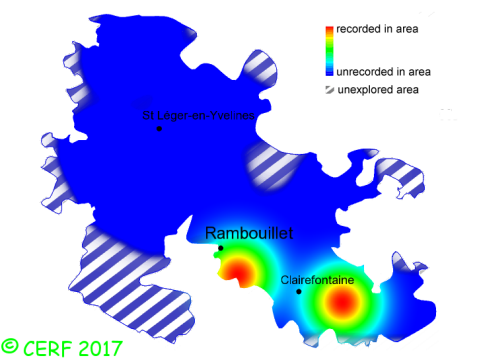|
Xerula pudens (Pers.:Fr.) Singer
|
common name(s) : Tall Collybia
New classification: Basidiomycota/Agaricomycotina/Agaricomycetes/Agaricomycetidae/Agaricales/Physalacriaceae
Former classification: Basidiomycota/Homobasidiomycetes/Agaricomycetideae/Tricholomatales/Dermolomataceae
synonyms: Xerula longipes, Oudemansiella pudens, Collybia longipes, Oudemansiella longipes, Collybia badia ss.Lge.
(unconfirmed synonyms: Marasmius longipes)
edibility : discard
|
|
|
The cap is pale beige to brownish, conical then expanded, with a central umbo.
The cap surface is smooth, not viscid nor sticky.
The stem is brown, without ring.
The flesh is white, unchanging; its taste is mild; the odour is nutty;
its texture is fibrous.
The gills are white, free, distant .
The spore print is white. This species is saprophytic.
It grows on a rather calcareous soil, with oak, beech.
The fruiting period takes place from July to November.
| Dimensions: | width of cap approximately 6 cm (between 2.5 and 10 cm) |
| | height of stem approximately 14 cm (between 9 and 25 cm) |
| | thickness of stem (at largest section) approximately 8 mm (between 3 and 15 mm) |
Distinctive features : brown cap and stem, velvety, covered with short tawny hairs; rooting stem, of same colour as cap; distant gills
Xerula pudens is quite rare and localised in the forest of Rambouillet, and is infrequent, more generally speaking
.
|  | | Above : distribution map of Xerula pudens in the forest of Rambouillet |
|
page updated on 14/01/18
